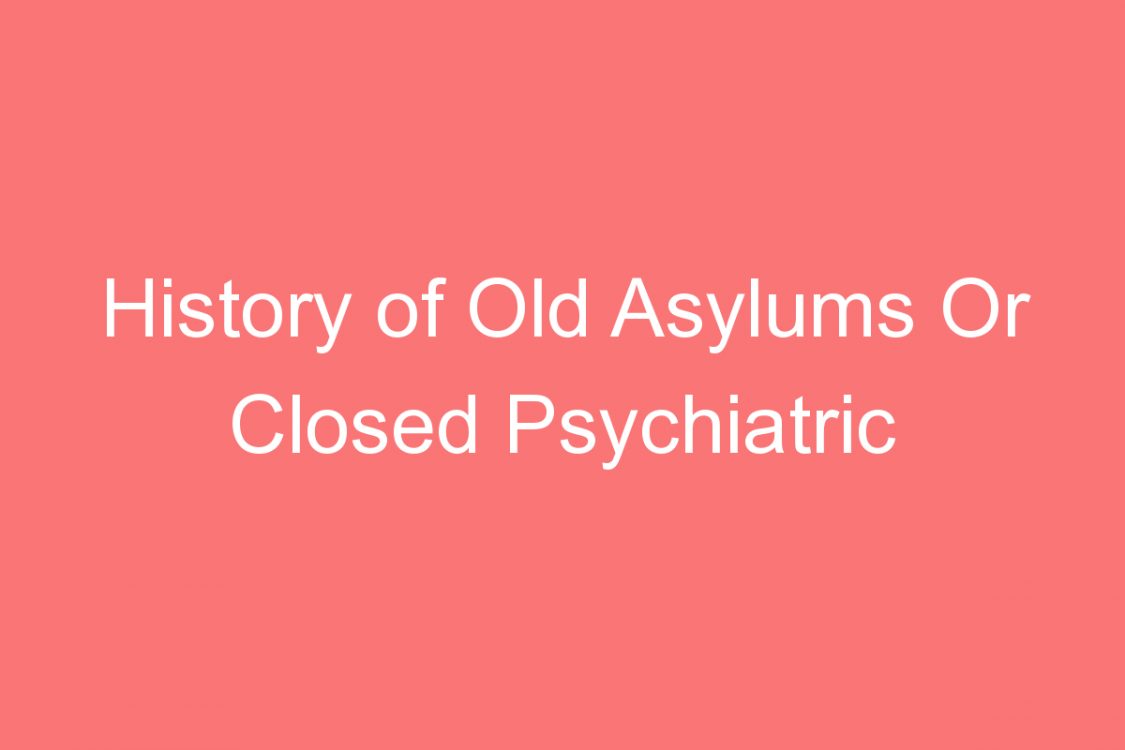The intention was for the asylums to be places of refuge – sanctuaries where patients’ disorders were recognized and allowed for. Their founders hoped that the mentally ill could be cured by providing them with a calming environment, fresh air, a varied diet, exercise and jobs in the asylum’s workshops or farm – an approach known as “moral treatment”. Example is the sweeping marble staircase in the lobby at Yankton State Hospital in South Dakota.
But asylums started out as philanthropic dreams, rather than psychiatric nightmares. The concept was born in the mid-1800s, when socially minded citizens, dismayed by the often dismal lot of the mentally unstable, paid for dozens of institutions to be constructed for their care. By 1880, 139 had been built in the US. These were often palatial buildings, designed by prestigious architects, with vast landscaped grounds and impressive vistas. They were symbols of civic pride, just as museums and universities are today, and some became fixtures on the tourist trail. This vintage postcard shows part of the extensive gardens of Danvers State Hospital in Massachusetts.
Asylums even cared for residents after their deaths. Patients might be buried in the asylum’s graveyard, or their remains stored for collection by next of kin – although that sometimes never happened. There are rows of unclaimed copper cremation urns at Oregon State Hospital.
As time went on, however, state funding dwindled, and so did the number of qualified staff. The benevolent philanthropists’ dream began to crumble, with the institutions gradually becoming “bywords for squalor and negligence, and often run by inept, corrupt or sadistic bureaucrats”, writes Sacks. This is the view through the observation window from the seclusion room at Middletown State Hospital in New York.
By the 1980s, de-institutionalisation was in full swing, with patients being returned to their communities in large numbers. The remaining institutions were shut down, with their grounds sold off and buildings demolished. But by the 1990s it became clear that the rapid closing of the asylums had been a mistake. Not enough clinics and half-way houses had been set up to ease the transition, and the community care centres were struggling to cope. There is Danvers State Hospital, which closed in 1992 but where demolition only began in 2005. There was public outcry at the destruction of its Gothic architecture, which is said to have inspired the fictional Arkham Asylum of the Batman comics.
Care in the community offered the remaining state hospitals relief from their financial pressures, but these were renewed in the 1970s, when laws were passed establishing minimum standards of care and barring patients from working. These measures were intended to protect patients’ rights, but the cost of complying with them was staggering. Vast areas of land were sold to raise funds and the institutions started to decay. Patients who could not be treated in accordance with the new standards were simply released. Those who remained found themselves directionless, sometimes becoming the TV-addict zombies of popular imagination. The Norwich State Hospital, Connecticut, was closed in 1996. Although its windows are boarded up, its national architectural and historical significance mean that its buildings can’t be torn down.
The 1950s brought the advent of antipsychotic drugs such as Thorazine, which suppressed the symptoms of mental disorders, raising hopes that sufferers might be able to lead relatively normal lives beyond the asylum walls. This was a welcome development for the cash-strapped asylums. A 1948 survey showed that a quarter of New York’s state budget was going to the hospitals, and by the mid-1960s the US government had started to opt for community care of the mentally ill. New mental health centres were set up, designed to administer the short-term treatments made possible by the new drugs. There are photographs of typical wards of the now outmoded asylums, a corridor with bedrooms branching off it, at Buffalo State Hospital in New York. It was euphemistically rebranded as a state hospital at the turn of the century.

